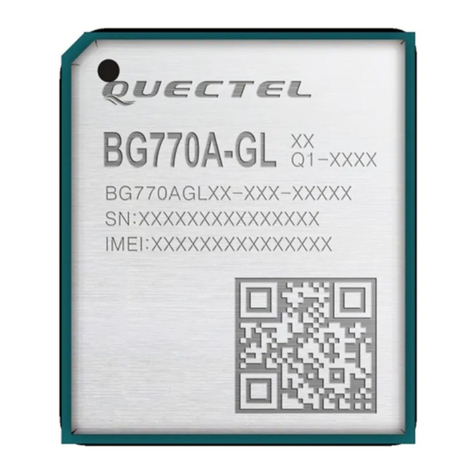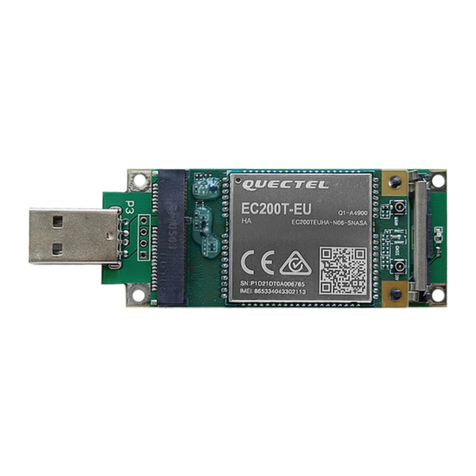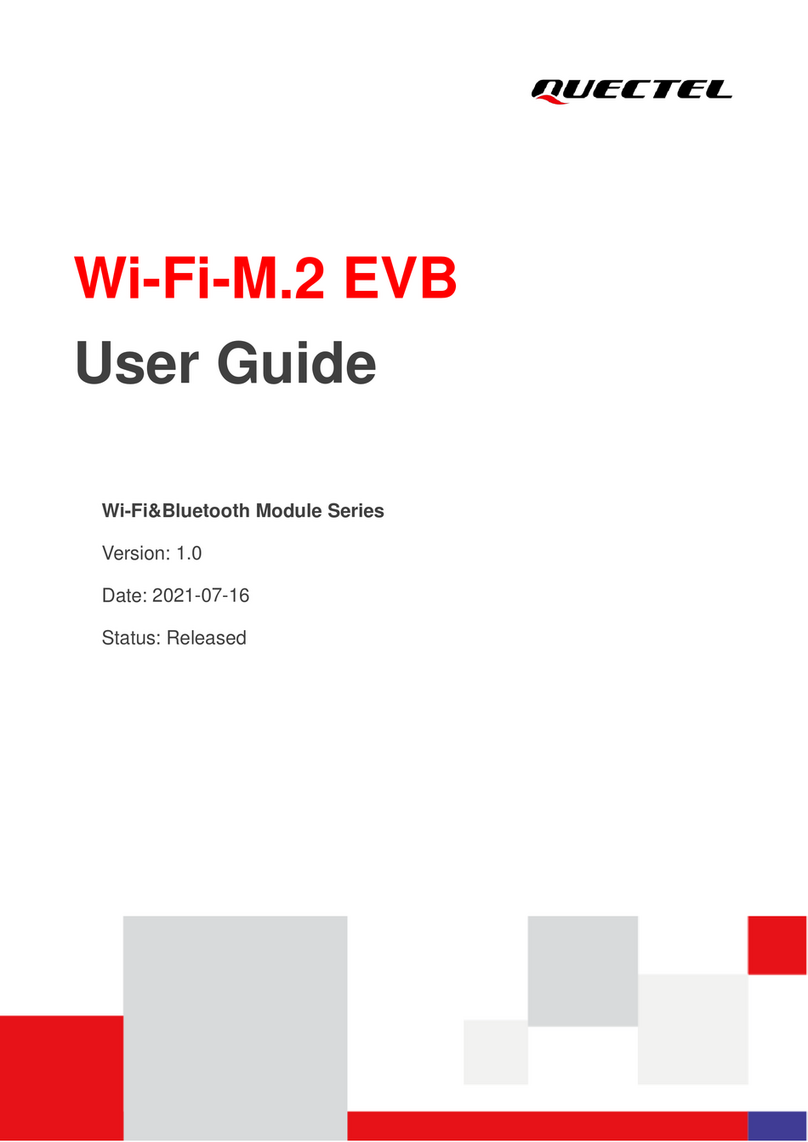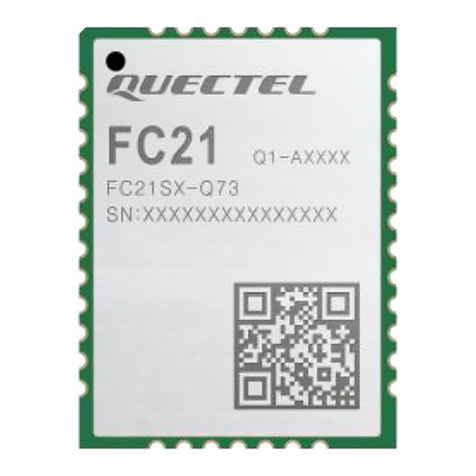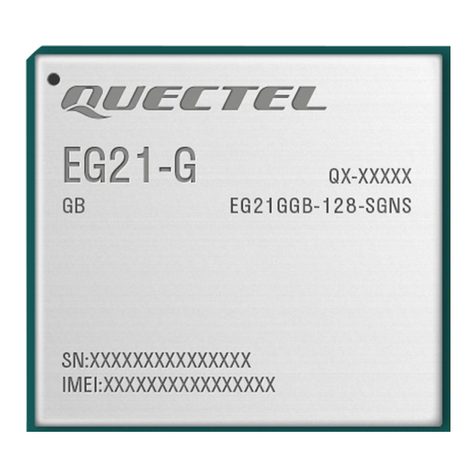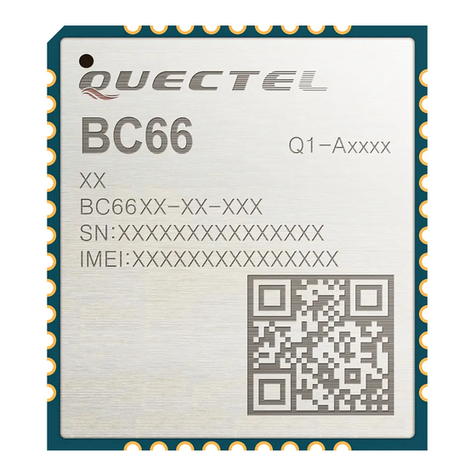
LPWA Module Series
BG952A-GL_QuecOpen_Hardware_Design 8/ 72
Table Index
Table 1: Special Mark ...................................................................................................................................11
Table 2: Frequency Bands and GNSS Types of BG952A-GL QuecOpen ..................................................12
Table 3: Key Features of BG952A-GL QuecOpen ...................................................................................... 13
Table 4: Definition of I/O Parameters .......................................................................................................... 19
Table 5: Pin Description ............................................................................................................................... 20
Table 6: Overview of MAP Operating Modes .............................................................................................. 25
Table 7: Overview of MCU Operating Modes ..............................................................................................26
Table 8: Maximum Device Sleep Level of MAP-MCU Mode Combinations ...............................................27
Table 9: Power Supply Pin Definition .......................................................................................................... 28
Table 10: PWRKEY Pin Definition ............................................................................................................... 30
Table 11: Pin Definition of RESET_N .......................................................................................................... 33
Table 12: Pin Definition of PON_TRIG Interface .........................................................................................35
Table 13: Pin Definition of (U)SIM Interface ................................................................................................36
Table 14: Pin Definition of USB Interface .................................................................................................... 38
Table 15: Pin Definition of Main UART Interface .........................................................................................39
Table 16: Pin Definition of CLI UART Interface ...........................................................................................40
Table 17: Pin Definition of ADC Interfaces .................................................................................................. 42
Table 18: Characteristics of ADC Interfaces ............................................................................................... 43
Table 19: Pin Definition of NET_STATUS ....................................................................................................43
Table 20: Operating Status of NET_STATUS ..............................................................................................44
Table 21: Pin Definition of STATUS ............................................................................................................. 44
Table 22: Pin Definition of GRFC Interfaces ............................................................................................... 45
Table 23: Truth Table of GRFC Interfaces ...................................................................................................45
Table 24: GNSS Performance ..................................................................................................................... 46
Table 25: Pin Definition of the Main Antenna Interface ...............................................................................48
Table 26: BG952A-GL QuecOpen Operating Frequency ........................................................................... 48
Table 27: Pin Definition of GNSS Antenna Interface ...................................................................................50
Table 28: GNSS Operating Frequency ........................................................................................................50
Table 29: Antenna Requirements ................................................................................................................ 53
Table 30: Absolute Maximum Ratings ......................................................................................................... 56
Table 31: Power Supply Ratings ..................................................................................................................56
Table 32: Operating and Storage Temperatures ......................................................................................... 57
Table 33: Power Consumption (Power Supply: 3.3 V, Room Temperature) ...............................................57
Table 34: GNSS Current Consumption of (3.3 V Power Supply, Room Temperature) .............................. 59
Table 35: Tx Power ...................................................................................................................................... 60
Table 36: Conducted RF Receiving Sensitivity of BG952A-GL QuecOpen ............................................... 60
Table 37: Electrostatic Discharge Characteristics (25 ºC, 45 % Relative Humidity) .................................. 61
Table 38: Recommended Thermal Profile Parameters ...............................................................................68
Table 39: Carrier Tape Dimension Table (Unit: mm) ................................................................................... 69
Table 40: Plastic Reel Dimension Table (Unit: mm) ....................................................................................69
Table 41: Related Documents ..................................................................................................................... 71
